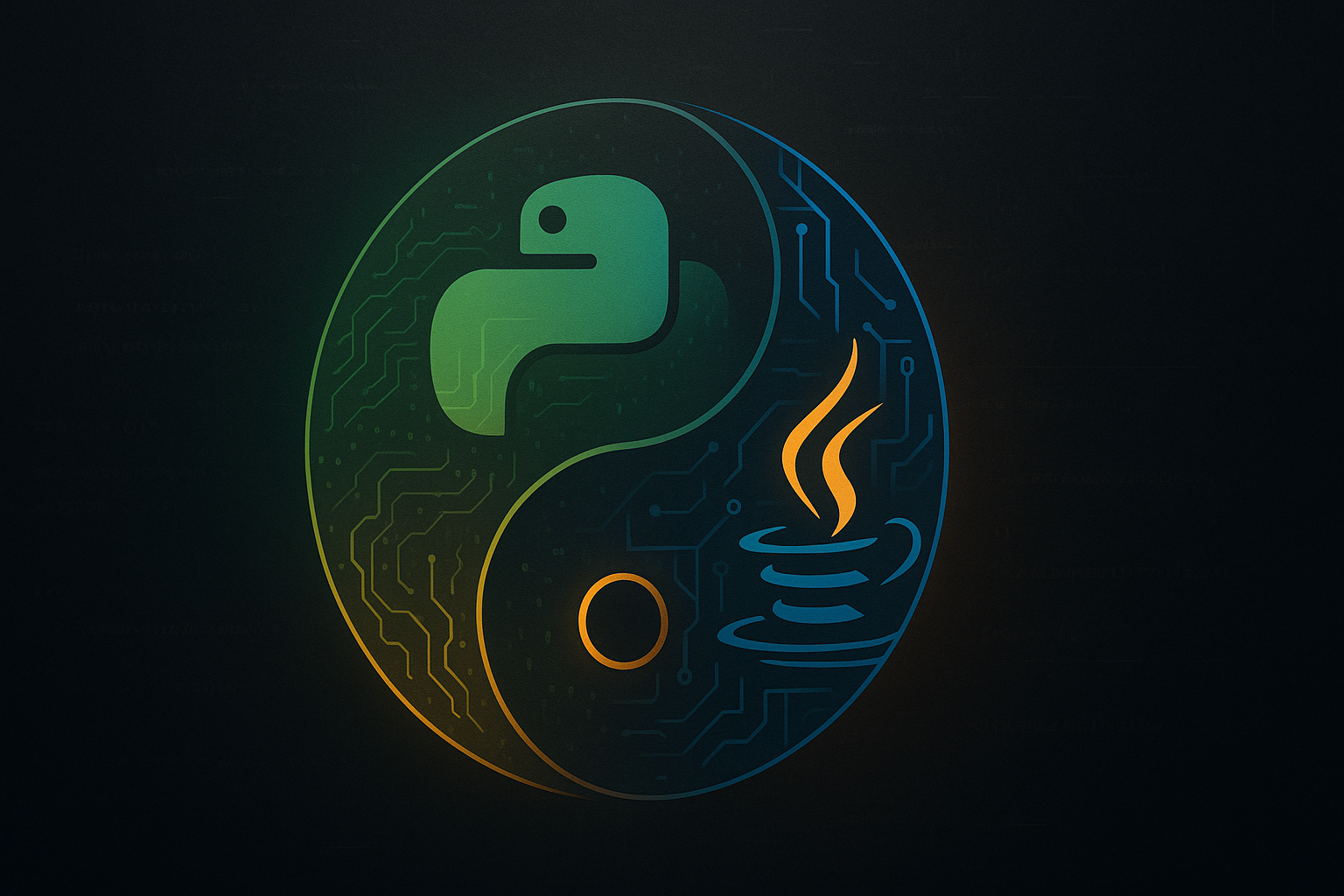Python vs. Java: Navigating the Future of Software Development
A look at their strengths, weaknesses, and evolving roles in the tech landscape.

The choice between Python and Java is a perennial question for developers, students, and tech leaders. Both are titans in the programming world, each with a rich history, vast ecosystems, and dedicated communities. But as technology evolves, so do the roles and relevance of these languages. Let's dissect their current standing and gaze into their potential futures.
Java: The Enterprise Workhorse
For decades, Java has been the backbone of large-scale enterprise applications. Its "write once, run anywhere" (WORA) philosophy, powered by the Java Virtual Machine (JVM), made it incredibly versatile. Key strengths include:
- Performance: Compiled Java code, especially with modern JVM optimizations and frameworks like Spring Boot, can be highly performant for complex applications.
- Scalability: Java's architecture and rich set of libraries are well-suited for building scalable, distributed systems and microservices.
- Ecosystem: A massive ecosystem of mature libraries, frameworks (Spring, Hibernate), and tools supports almost any development need.
- Concurrency: Robust built-in support for multithreading and concurrency makes it ideal for high-traffic applications.
- Android Development: While Kotlin is gaining traction, Java remains a primary language for Android app development.
Java's future remains strong in the enterprise space, big data processing (e.g., Apache Spark, Hadoop), and large-scale backend systems. The language itself continues to evolve with more frequent releases, adding modern features while maintaining backward compatibility.
Python: The Versatile Scripting Powerhouse
Python has surged in popularity due to its simplicity, readability, and an extensive collection of libraries that make rapid development a breeze. Its core advantages are:
- Ease of Learning & Use: Python's syntax is clean and intuitive, making it a favorite for beginners and for quickly prototyping ideas.
- Data Science & AI/ML: This is Python's killer domain. Libraries like NumPy, Pandas, Scikit-learn, TensorFlow, and PyTorch have made it the de-facto language for artificial intelligence and machine learning.
- Web Development: Frameworks like Django and Flask allow for rapid development of web applications, from simple sites to complex platforms.
- Scripting & Automation: Python excels at automating tasks, system administration, and writing utility scripts.
- Large Community: A vibrant and active community contributes to a wealth of open-source packages.
Python's future looks incredibly bright, particularly in AI/ML, data analysis, scientific computing, and web development. Its ease of integration makes it a great "glue" language for connecting different systems.
Head-to-Head: Key Differences & Future Outlook
While both are object-oriented, their philosophies differ. Java is statically typed and compiled, emphasizing robustness and early error detection. Python is dynamically typed and interpreted (or JIT-compiled in some implementations), prioritizing developer productivity and flexibility.
Performance: Generally, Java outperforms Python in raw computational speed for CPU-intensive tasks due to its compiled nature and JVM optimizations. However, for many AI/ML tasks, Python often calls highly optimized C/C++ libraries, mitigating this difference. For I/O-bound tasks, the gap can be smaller.
Development Speed: Python typically allows for faster development cycles due to its simpler syntax and dynamic typing, making it ideal for startups and projects requiring quick iterations.
The Future is Polyglot: Increasingly, the "Python vs. Java" debate is becoming less about choosing one over the other and more about understanding where each excels. Many modern systems are polyglot, using Java for performance-critical backend services and Python for data science pipelines, AI model training, or scripting tasks. For example, a company might use Java microservices for its core transactional platform and Python for its recommendation engine.
The rise of technologies like GraalVM (allowing for native compilation of Java and interop with other languages like Python) and advancements in Python's performance (e.g., projects like Mojo aiming for C-level speed) could further blur the lines.
Conclusion
Neither Python nor Java is "better" in an absolute sense; their value is context-dependent. Java will likely continue its reign in enterprise systems requiring high performance and scalability. Python will dominate the AI/ML landscape and remain a top choice for rapid development and scripting.
For developers, understanding the strengths of both and potentially being proficient in both, opens up a wider range of opportunities. The future of software development is not about a single language winning, but about leveraging the right tool for the right job in an increasingly interconnected and specialized technological world.